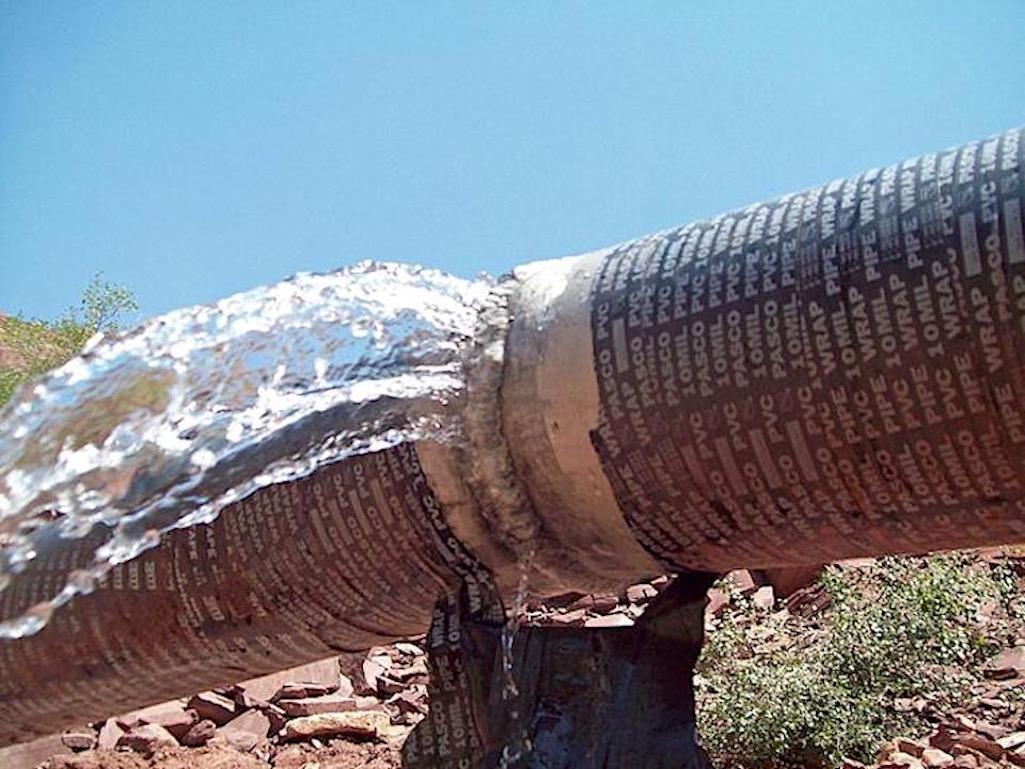
Work to rebuild the leaky transcanyon waterline at Grand Canyon National Park is slated to begin later this spring/NPS file
Prep work for rebuilding the miles-long pipeline that funnels water to the South Rim of Grand Canyon National Park is scheduled to begin later this spring, though it will take about four years to complete the $208 million project.
Rebuilding the transcanyon waterline will involve related upgrades to the associated water delivery system within the inner canyon and South Rim. This critical investment will ensure the park is able to meet water supply needs for the next 50 plus years, supporting 6 million annual visitors and approximately 2,500 year-round residents, accoriding to a park release.
Initial activity in later this spring and summer will focus on establishing construction infrastructure and staging areas in the Grand Canyon Village Area on the South Rim. The National Park Service does not anticipate restrictions or closures in 2023 that would impact visitors. The waterline replacement is projected for completion in 2027.
“This huge undertaking is an example of the work taking place in national parks across the country to repair or replace vital infrastructure that provides visitors with safer and more enjoyable experiences,” National Park Service Director Chuck Sams said. “For too long, large scale needs in national parks could not be properly addressed due to a lack of funding. Bipartisan commitment from funding sources, including the Great American Outdoors Act and the Federal Lands Recreation Enhancement Act, is truly making a difference and enabling the National Park Service to effectively tackle critical upgrades.”
“It’s taken years of planning, public involvement, design work and coordination to reach this milestone, and we’re excited to work through the next phase to complete such a critical project that is the lifeline for our staff, residents and visitors,” said Grand Canyon National Park Superintendent Ed Keable.
As the Traveler reported last month, the Park Service is replacing the pipeline because it is beyond its expected useful life, experiences frequent failures, and requires expensive and continuous inner canyon maintenance work to repair leaks. Since 2010, there have been more than 85 major breaks in the pipeline that have disrupted water delivery. Costs for a single isolated break often exceed $25,000. Conditions in the inner canyon include extreme terrain and high temperatures, which increase risk to employees during repair operations. The system also supplies water for fire suppression for all South Rim and inner canyon facilities, including more than 800 buildings listed in the National Register of Historic Places.
Originally built in the 1960s, the pipeline is a 12 ½-mile waterline that provides the potable water for all facilities on the South Rim and inner canyon facilities within the park. The rehabilitation project will move the water intake for the system from Roaring Springs to Bright Angel Creek near Phantom Ranch. This location will greatly reduce the length of the pipeline and eliminate a portion of the current waterline north of Phantom Ranch that experiences the most frequent failures. The water intake at Roaring Springs will continue to provide water to the North Rim. The project includes:
- Construction of an auxiliary hangar, helicopter landing pad, and contractor support area at the park helicopter base in order to support inner canyon construction.
- Construction of a 1 million-gallon per day water treatment plant at the South Rim and a smaller water treatment plant at Phantom Ranch.
- Replacement of the water distribution system at Havasupai Gardens.
- Replacement of approximately 3 miles of waterline and the upgrade of approximately 3 miles of electrical supply line from Havasupai Gardens to Phantom Ranch.
- Construction of a water intake system and pumping station and local water treatment plant for the Phantom Ranch area.
- Replacement of the water and electrical distribution systems at Phantom Ranch.
The NPS awarded the $208 million construction contract on March 14, 2023 to Stronghold Engineering, Inc. of Perris, Calif.


